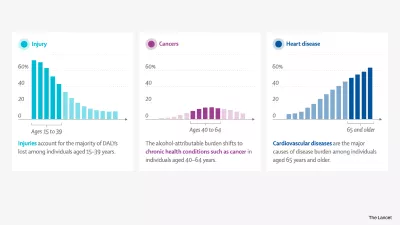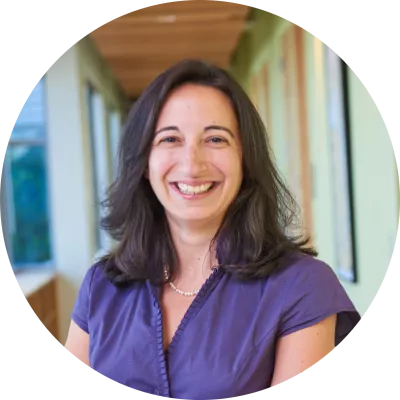Alcohol use
Alcohol use is a major risk factor for death and disability worldwide. In some countries, it is the number one risk factor for men.
Photo by Chuttersnap, Unsplash.
How much alcohol is safe to drink?
The risks of drinking alcohol depend on age, local disease patterns, and underlying health conditions:
- For young adults ages 15–39, there are no health benefits to drinking alcohol, only health risks.
- For people over age 40, drinking a small amount of alcohol may provide some health benefits.
Young people tend to experience a higher rate of injuries as a result of alcohol use, leading to an increase in death and disability for that age group.
For older adults without underlying health issues, having 1-2 standard drinks per day may reduce the risk of cardiovascular disease, stroke, and diabetes. However, overconsuming alcohol can lead to additional health problems, like liver cirrhosis and some cancers.
On a global scale, the impact of drinking alcohol varies by age
Relative proportions of global disability-adjusted life years (DALYs) for causes associated with alcohol use, by cause and age (2020)

IHME & The Lancet infographic: Drinking alcohol has significant health risks for young people, small amounts may be beneficial for some older adults

Dr. Emmanuela Gakidou, Professor of Health Metrics Science
“Our message is simple: young people should not drink, but older people may benefit from drinking small amounts. While it may not be realistic to think young adults will abstain from drinking, we do think it’s important to communicate the latest evidence so that everyone can make informed decisions about their health.”
Why isn’t there a scientific consensus about safe levels of alcohol use?
The patterns for alcohol use and its health impacts are specific to each region of the world and vary depending on the age of the consumer and their overall health status. This results in different recommendations for alcohol consumption. For example:
- In central sub-Saharan Africa, 15% of alcohol-related health risks for those aged 55+ were due to tuberculosis, leading to a recommendation of less than half a standard drink per day.
- By contrast, in North Africa and the Middle East, around 1% of alcohol-related health risks were due to tuberculosis, reflected in a recommendation of about 1 standard drink per day.
There is also some disagreement in the scientific community about the effects of alcohol on cardiovascular disease in individuals over 65. Some studies suggest that small amounts of alcohol may offer protection from cardiovascular disease, while other studies show that alcohol may contribute to it.
Always be sure to consult a health care professional for individual recommendations based on your personal health risks.
Alcohol use is a prominent health risk.

What is the disease burden of alcohol use?
In 1990, high alcohol use was the 15th most relevant risk factor for deaths worldwide; in 2021, it has risen to the 10th most relevant risk factor, responsible for over 1.8 million deaths from various alcohol-attributable causes.
Men are disproportionately prone to health problems stemming from alcohol use, and Eastern Europe in particular is disproportionately affected by alcohol use disorders. Excessive alcohol consumption can lead to several serious health conditions, including:
- Cirrhosis of the liver
- Fetal alcohol syndrome
- Chronic illnesses such as heart disease, stroke, and some cancers
- Interpersonal violence, self-harm (suicide), drunk driving–related injuries, and other unintentional injuries

Researchers Dr. Emmanuela Gakidou, Dana Bryzaka, and Marissa Reitsma discuss key findings from an analysis published in The Lancet and what alcohol consumption recommendations should be made based on age and location.


